It is the birthplace of ancient Chinese Wu-Yue culture and Yangtze River culture.
Here is surging with energy.
It is the only province where all prefecture-level cities are among the top 100.
It has a dense network of rivers.
The Yangtze River, Huaihe River and Beijing-Hangzhou Grand Canal crisscross.
It is the only province in the country that has big rivers, great rivers, large lakes and the sea.
With lush vegetation, it is a famous “land of fish and rice”.
Here is outstanding in people and beautiful in landscapes.
The familiar “Jasmine Flower” was born in this magical and beautiful land.
There are also many “China’s bests”.
Let’s take a look at Jiangsu Province that you may not know.
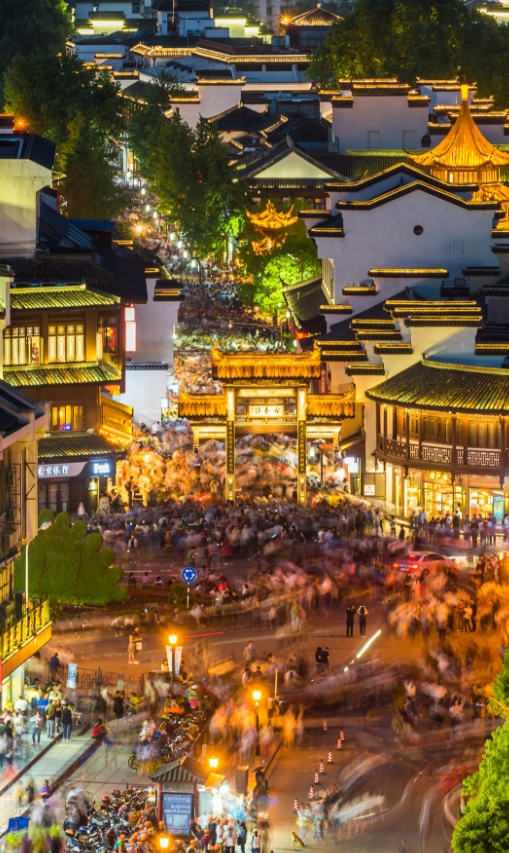
- What makes Jiangsu?
As the province with the flattest terrain and lowest average altitude in the country, the altitude of most areas in Jiangsu Province does not exceed 50 meters. It has the characteristic title of “one mountain, two waters, and seven parts of fields.” Jiangsu Province is located in the Yangtze River Delta. It is one of the provinces and regions along the Yangtze River and the coast. It also has multiple port cities. Here are big rivers (Yangtze River), great rivers (Grand Canal and Huaihe River), large lakes (Taihu Lake and Hongze Lake), and the sea (East China Sea and Yellow Sea).
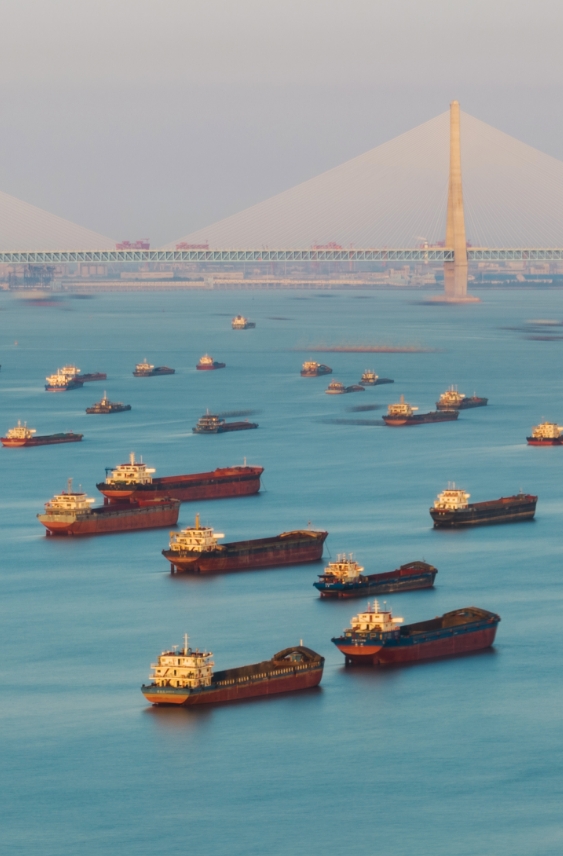
Nantong water freight transportation.
In all dynasties and generations, this has been a prosperous area and also an economic and cultural hub.
⭐At the end of the Shang Dynasty, Taibo and Zhongyong brothers moved to the south of the Yangtze River (now Jiangsu area) and established the State of Gouwu.
⭐At the end of the Qin Dynasty, Liu Bang unified the country and established the Han Dynasty. Liu Bang’s nephew Liu Bi made Guangling (now Yangzhou) his capital.
⭐The Eastern Wu, Eastern Jin, and the Song, Qi, Liang, and Chen dynasties of the Southern Dynasties successively established their capitals in present-day Nanjing. The Jiangsu area became the political, economic, and cultural center of the south.
⭐During the Sui and Tang dynasties, the Grand Canal was completed. Yangzhou became the transportation, economic, and cultural hub between the north and the south. It was known as “Yangzhou is the first and Yizhou is the second.”
⭐During the Song Dynasty, the Jiangsu area became a famous granary across the country.
⭐At the beginning of the Ming Dynasty, the capital was established in Nanjing. Nanjing once again became the political and cultural center of the country. In the Qing Dynasty, the grain and salt production in Jiangsu Province ranked first in the country.
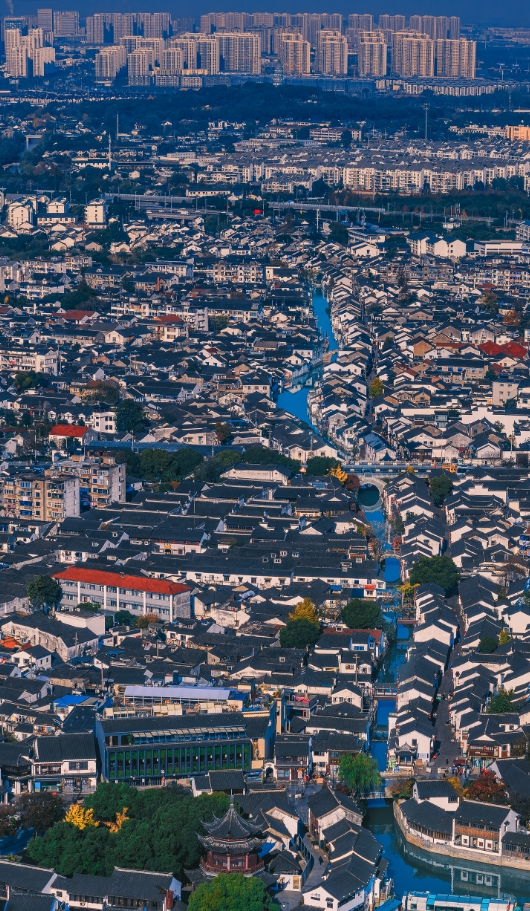
Suzhou Qili Shantang.
Today, Nanjing City, Wuxi City, Xuzhou City, Changzhou City, Suzhou City, Nantong City, Lianyungang City, Huai’an City, Yancheng City, Yangzhou City, Zhenjiang City, Taizhou City, and Suqian City and other 13 cities form the beautiful and rich Jiangsu Province.
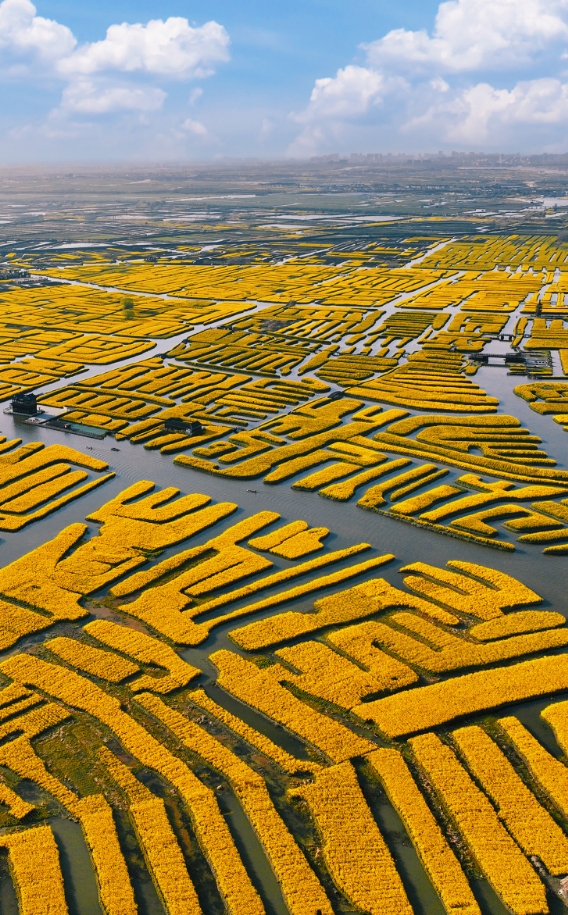
Taizhou Xinghua rape flower field.
Speaking of Jiangsu, one must mention Suzhou gardens. Suzhou is known as the “city of gardens.” Gardens such as the Lingering Garden, Master-of-Nets Garden, Humble Administrator’s Garden, Dark Blue Waves Pavilion, Lion Grove Garden, and Hanshan Temple are representative works of Suzhou gardens.
In textbooks, the Suzhou gardens described by Ye Shengtao are deeply impressive. He gave a very high evaluation that “Suzhou gardens are specimens of gardens all over China.”
In Suzhou gardens, there are rockeries and ponds. The stacking of rockeries can be said to be an art rather than just a technique. There are either overlapping peaks or several small hills combined with bamboo, flowers, and trees… Goldfish or various colored carp are raised in the ponds. In summer and autumn, lotus or water lilies bloom. Tourists seeing “fish playing among lotus leaves” is another scene in a painting. 🐟
Probably few people know that Jiangsu Province is also one of the provinces with the most and most concentrated volcanic distributions. The most are preserved in Nanjing Jiangning District, Liuhe District, Yangzhou Yizheng City, Huai’an Xuyi County and other places on both sides of the Yangtze River.
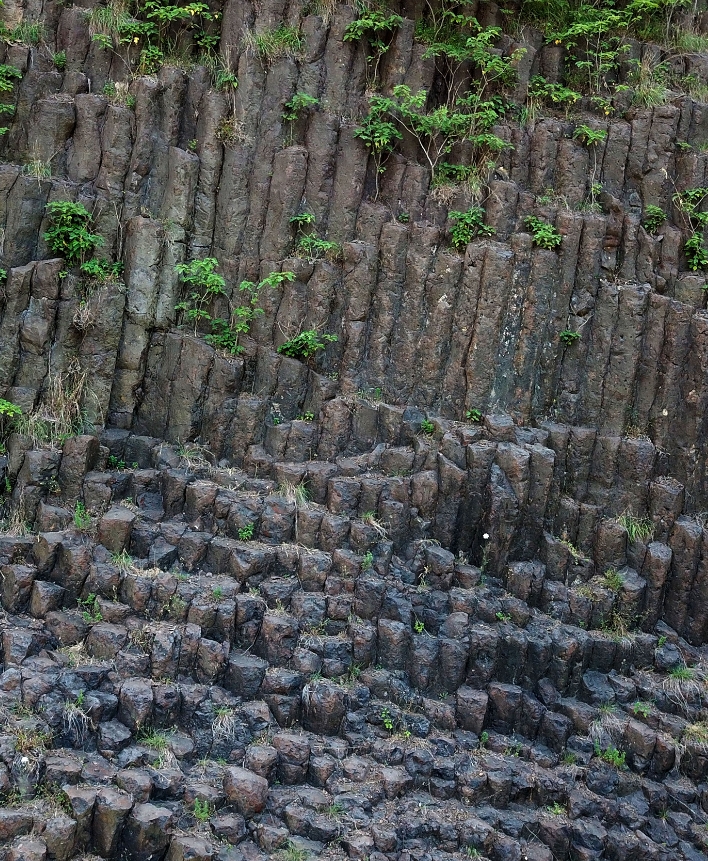
Stone pillar forest in Guizi Mountain, Nanjing.
Jiangsu is located near the junction and fault zone of multiple plates. When the earth’s crust moves, it is easy for strata to fold and fracture. This is also the reason for many volcanoes.
Jiangsu not only has a long history and beautiful scenery but also is very 硬核 (powerful). In 2022, the total research and development investment of Jiangsu Province exceeded 370 billion yuan. The contribution rate of scientific and technological progress reached 67%. The regional innovation ability has been among the top in the country for many years.
The real economy is Jiangsu Province’s “trump card.” The manufacturing scale has remained the first in the country for many years. The total number of national advanced manufacturing clusters ranks first in the country.
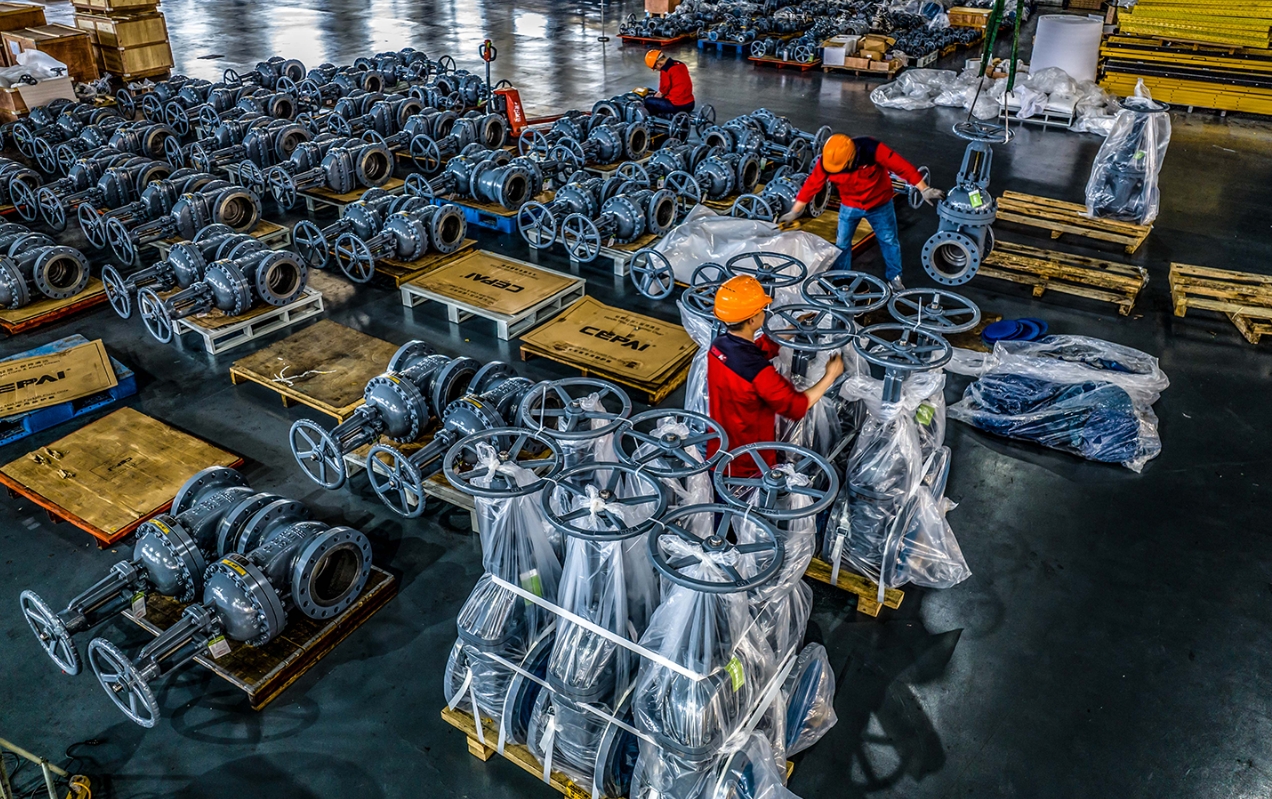
△Workers in an enterprise in Jinhu Industrial Park, Huai’an are rushing to produce domestic and foreign orders.
- Every city has its hard power.
The competitive and cooperative relationship among various cities and regions in Jiangsu Province has created the strong overall comprehensive strength. Just how strong is Jiangsu? The 13 cities each have their own impressive hard power (the following order is for reference on the website of the Jiangsu Provincial People’s Government).
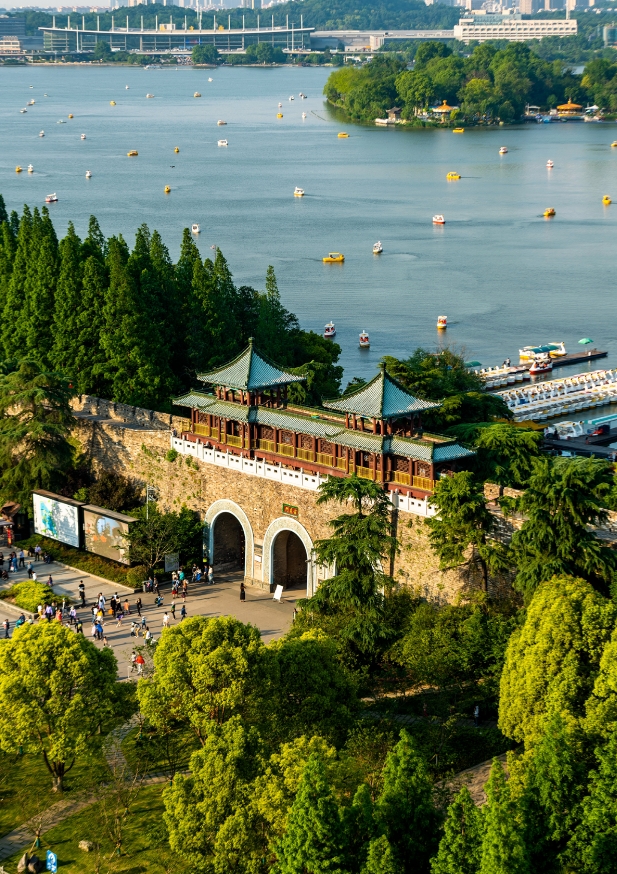
△Xuanwu Gate in Nanjing.
Nanjing has also specially set up a “Yangtze finless porpoise observation point.” Here, you can encounter the “smiling elf” in the Yangtze River.
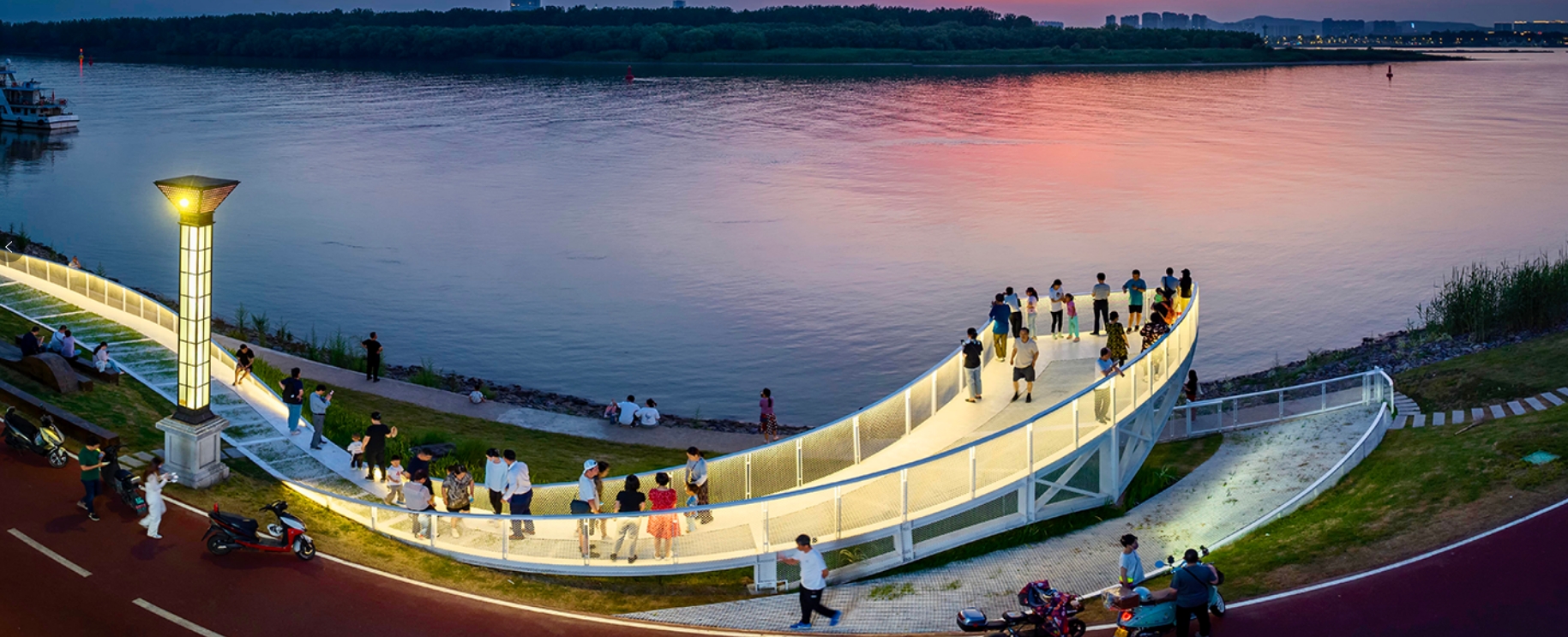
△Nanjing City is the only city in the country where finless porpoises can be seen in the main urban area.
In recent years, Nanjing has focused on key fields such as network communication and security. The Purple Mountain Laboratory has gathered a scientific research team of a thousand people and has achieved a series of world-leading results in fields such as future networks, B5G/6G communications, and network security.
Jiangyin City in Wuxi is the county-level city with the largest number of listed companies in the country. The industries involved include textile and clothing, petrochemical new materials, metal new materials, new energy, integrated circuits, equipment manufacturing, etc.
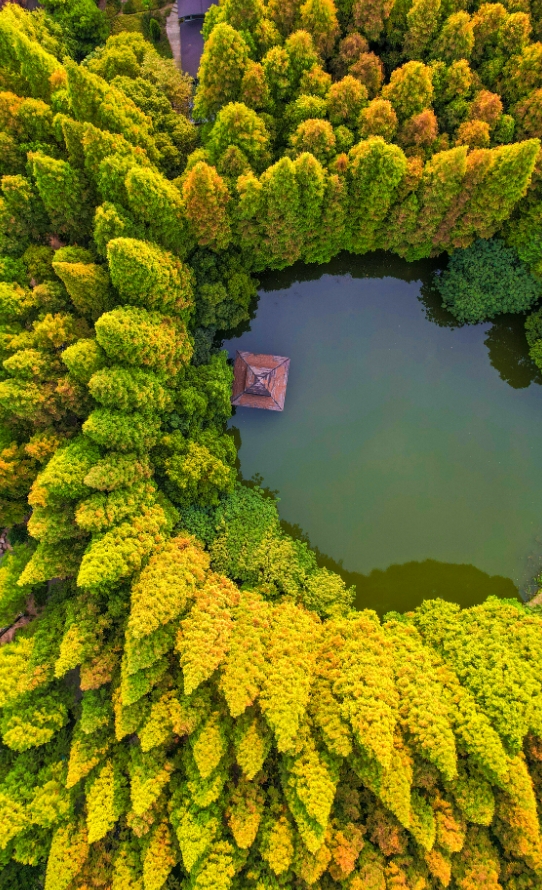
△Jiangyin City Binjiang Fort Tourism Area.
Xuzhou City: Northerners see it as the south, and southerners see it as the north. It enjoys the logistics convenience of the areas with free shipping and at the same time enjoys heating in winter. Here is not only an important energy town and heavy industry base but also has China’s first underwater Terracotta Army museum – Xuzhou Underwater Terracotta Army Museum.
The west hall of the museum shows the original appearance of the excavation of the figurine pits. The east hall introduces China’s ancient cavalry legions and displays the scene of the Han Dynasty cavalry figurine army formation.
When it comes to heavy industry, Xuzhou must be mentioned. Heavy industry is a pillar industry in Xuzhou. A series of heavy industry industries such as steel, coal, electricity, and heavy machinery… make the old industrial city Xuzhou show a state of “vibrant and everything competing to develop.”
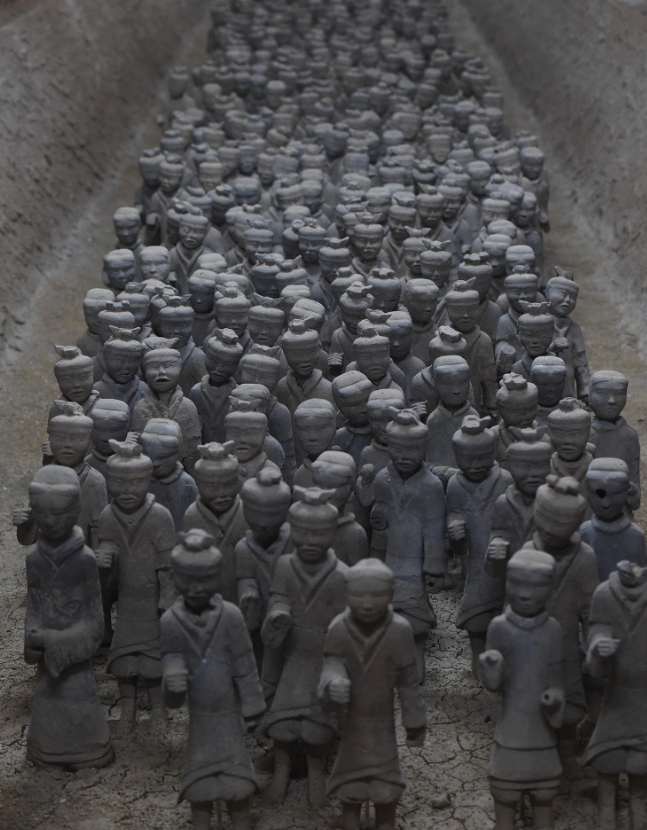
△The underwater Terracotta Army museum is built on the original site of the cavalry figurine pit and horse figurine pit that was once flooded.
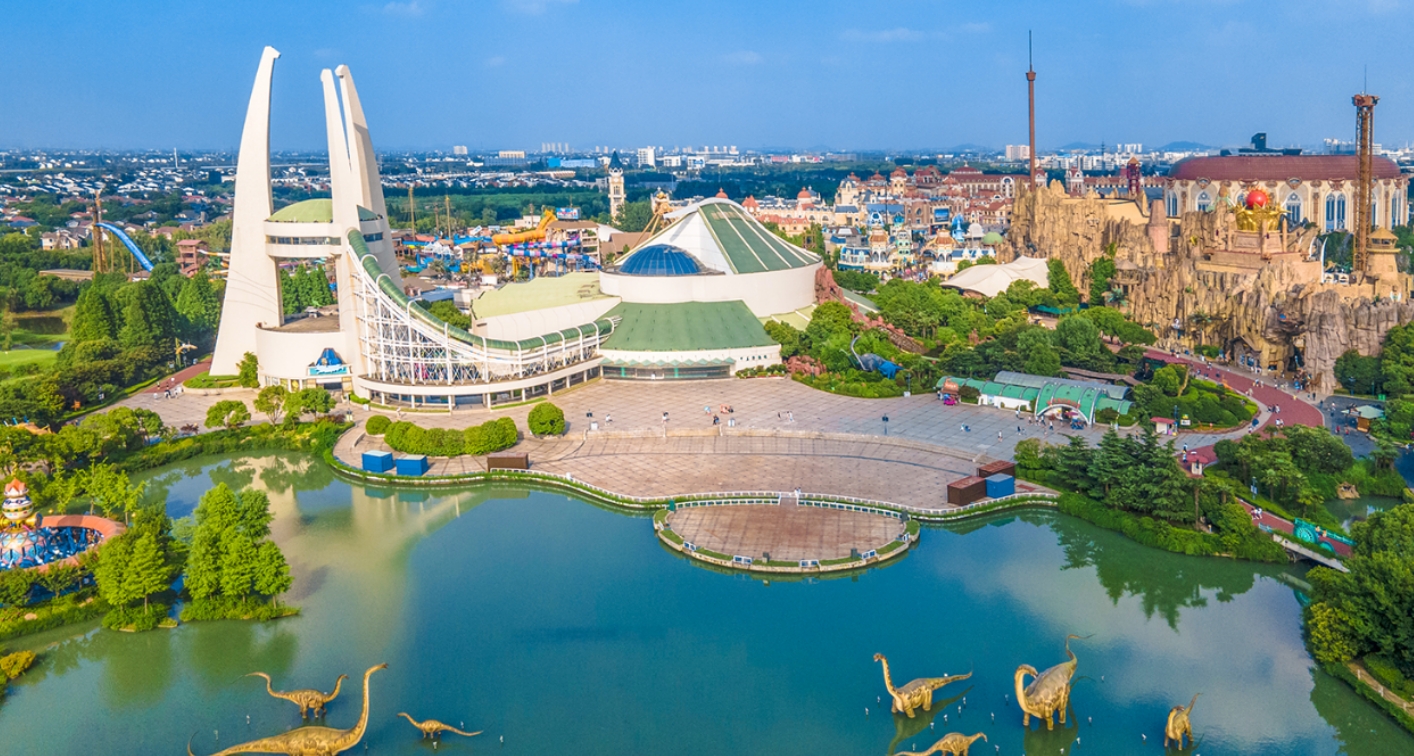
△Changzhou China Dinosaur Park.

△Changzhou Yancheng Spring and Autumn Palace.
The spherical steel bearings that support the main body of the Lusail Stadium, the main stadium of the Qatar World Cup, are provided by enterprises in Changzhou.

The ancestor of all operas, the peerless “Kunqu Opera” is in Suzhou.

Nantong is China’s largest home textile base. When you buy bedding, curtains, etc. online, most of the shipping locations are Nantong.

△Scenery of Nantong.
Today, various shipping routes and international trains in Lianyungang can reach important ports in countries and regions along the “Belt and Road.”

△Lianyungang port.
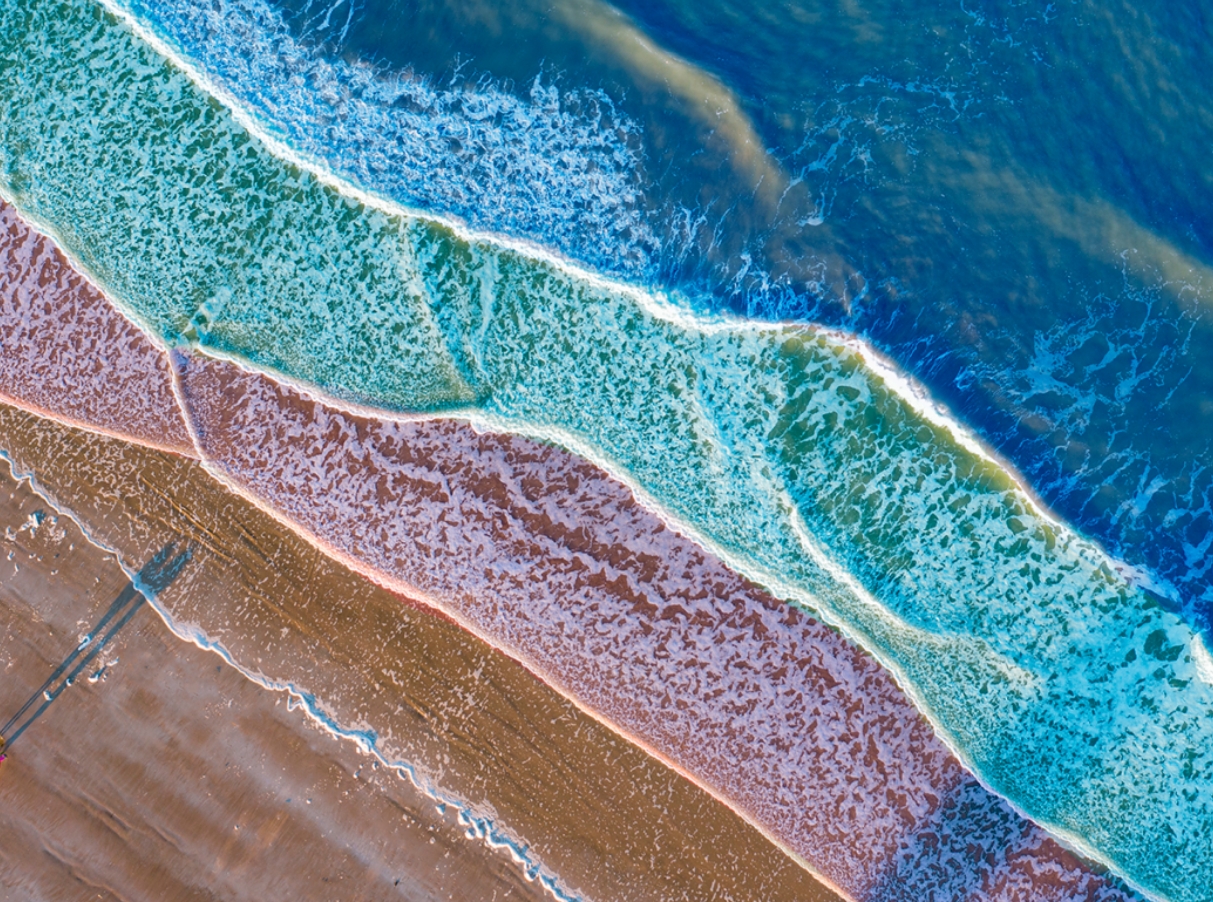
△Colorful beach in Lianyungang.
Lianyungang also has a very imposing label – the eastern starting point of the New Eurasian Continental Bridge. It also has an unexpected title of “a paradise for journey to the west.”

△According to legend, the prototype of Huaguo Mountain in “Journey to the West” is Huaguo Mountain in Lianyungang today.

△The Beijing-Hangzhou Grand Canal is reflected in the sunset glow.
Huai’an is the hometown of Comrade Zhou Enlai. The Zhou Enlai Memorial Hall is located in Taohuayin in the northern part of old Huai’an City. It is a national patriotism education demonstration base.



Gaoyou salted duck eggs are also very famous. In “Qimin Yaoshu” during the Southern and Northern Dynasties, there were records of Gaoyou salted duck eggs. Today’s Gaoyou salted duck eggs have become a national geographical indication product.

△The Gaoyou duck eggs described by Wang Zengqi are fine in texture and rich in oil. “As soon as the tip of the chopstick is poked in, zhi – red oil oozes out.”

△Slender West Lake scenic area in Yangzhou.
Zhenjiang vinegar has a unique charm. Different from the salty and mellow taste of Shanxi mature vinegar, Zhenjiang vinegar has a sweeter and softer taste. The longer it is stored, the more mellow it tastes and it will not deteriorate. This is the “Zhenjiang vinegar will not go bad” in the “Ballad of Three Wonders of Zhenjiang.”

△Zhenjiang vinegar spare ribs without Zhenjiang vinegar are incomplete.

Huangqiao Town here is also a nationally famous “hometown of violins.” For every 10 domestic violins, seven come from Taizhou.


△Flower and tree e-commerce anchors in Shuyang are live streaming to sell bonsai.

△The Liyehua wetland in Shiji Township, Sihong County, Suqian is full of vitality.
- What’s the taste of Jiangsu?
The cuisines in Jiangsu have their own characteristics. The collision of multiple flavors brings surprises and satisfaction with every bite.
The rich and saucy cuisine of Suzhou and Wuxi emphasizes “eating in season” (eating according to the season). It is mainly rich and saucy, often flavored with lees, and has a sweet and light taste. The dishes are exquisitely decorated and sweetish in a rich way. Famous dishes include squirrel-shaped mandarin fish, stir-fried eels in hot oil, honeyed ham, etc.
The areas of Suzhou and Wuxi are also rich in fish and shrimp. Being close to Taihu Lake, there are aquatic products such as whitebait, whitefish, white shrimp, and hairy crabs.
The inclusive Huaiyang cuisine cannot be separated from the word “soft.” Yangzhou fried rice, shredded tofu in consommé, braised silver carp head, jadeite steamed dumplings, Yangzhou spring rolls, soft-fried eels, Qin Gong meatballs… making people hungry.
Huaiyang cuisine pays the most attention to knife skills. Shredded tofu in consommé is one of the representative dishes. In the hands of chefs, tofu changes from blocks to strips, from strips to shreds, and finally spreads out into a flower in water. The superb knife skills are highly praised. Some can even cut shredded tofu in consommé on a balloon, and the tofu shreds can pass through a needle.


△It is said that one catty of tofu can be cut into more than 1,000 shreds of tofu.
People in Xuzhou have a strong taste and love eating mutton. According to historical records, the earliest origin of “kebabs” in China is in Xuzhou.

△There are all kinds of ways to cook Xuzhou mutton, including braised in brown sauce, clear soup, offal, and barbecue.
There are also many special delicacies in Jiangsu. Some netizens joked, “No duck can leave Nanjing alive.”
In Nanjing, there is a folk saying that “if you don’t eat duck for three days, you will slip when walking.” The love of Nanjing people for ducks is evident. The salted duck, Nanjing pressed duck, roast duck, duck blood vermicelli soup, dried duck gizzards, roast duck buns, and duck oil shortcakes sold in ordinary alleys witness Nanjing people’s enthusiasm for ducks.

△The predecessor of Beijing roast duck is Nanjing roast duck, which was brought to Beijing by Zhu Di from Nanjing.

△Nanjing duck blood vermicelli soup.
Xuyi crayfish in Huai’an is also one of the summer delicacies. It is said that for every 10 lobsters sold in Jiangsu, five of them are produced in Xuyi.
Surprised? Jiangsu is also a big province for eating noodles. Suzhou noodles, Changzhou silver-thread noodles, Yangzhou Yangchun noodles, Zhenjiang pot-cover noodles, Kunshan Aozao noodles, Huai’an eel noodles, Wuxi old-fashioned noodles, Nantong Caogong noodles, Nanjing pork tripe noodles, Fengzhen braised pork noodles… When you come to Jiangsu, how can you not have a bowl of noodles?
- Do you understand the joy of Jiangsu dialects?
Jiangsu people have the delicacy of southerners and the boldness of northerners in their personalities. In terms of language, they are also diverse. Let’s listen to the dialect styles (tests) of different regions in Jiangsu.
In history, Nanjing dialect was once the official language of China. When Nanjing people speak, they always have a unique temperament. It is straightforward and full of a sense of the Jianghu (the world of martial artists and adventurers), which is very exciting.
When a Nanjing person was eating wontons, the boss asked, “Do you want chili?” He replied, “A little.” Later, a tourist from another place nearby mistook it for “I love you.” Learn a few sentences of Nanjing dialect with me:
1️⃣Gan me si a? (What’s up? / What do you want from me?)
2️⃣Ni dao na guo ki a? (Where are you going?)
3️⃣Ni xiang de dai ne. (You are thinking too much.)
4️⃣Xiao de lai! (Got it! / I know.)
When describing a person who seldom goes out, Nanjing people often say, “(This person) never goes out of the main gate or the side gate. He doesn’t even touch the doorframe (men ber).”
Taking Xuzhou dialect as an example, Xuzhou dialect is most similar to the dialects of Zaozhuang in Shandong Province and Suzhou in Anhui Province.
The word “kei” is very frequently used in Xuzhou dialect, and its meaning changes according to different times and situations. It is very classic.
When a table of food is ready and the guests are all here, the host picks up the chopsticks and says, “Kei!” Everyone responds in unison, “Kei!” and then starts eating heartily. For another example, when everyone is tired from working together and takes a break. After a while, the team leader says, “Kei ba!” At this time, it means to start working.
“Guan” / “Bu guan” is also relatively common in Xuzhou dialect. “Guan” usually means it’s okay or worth doing:
1️⃣”This dish guan chi ma?” means “Is this dish edible?”
2️⃣”This place guan qu ma?” means “Is this place worth going?”
3️⃣”This thing bu guan xiang ma?” means “Is this thing not worth considering?”
Suzhou dialect is known for its softness. It likes reduplicated words in the “ABB” pattern, such as sourish, sweetish, bitterish, spicyish. For example, when describing people, there are words like sillyish (stupidish), chubbyish (plumpish), good girlish (good girl). Some people joke that quarreling in Suzhou dialect is like coquetry.
There is also a joke about Suzhou dialect. A person from another province asked a person from the Wu dialect area, “How do you say fish, crab, and shrimp in Wu dialect?” The person replied, “En, ha, hu.” The person from another province said with great pity, “Such a good young man, but unfortunately he can’t speak.”

△Aerial view of Jinxi, a water town in the south of the Yangtze River, Suzhou.
Yangzhou dialect is the representative of Jianghuai Mandarin. One major characteristic of Jianghuai Mandarin is the confusion between “n” and “l”. Yangzhou dialect has no retroflex consonants. All retroflex consonants are pronounced as unaspirated consonants. When pronouncing the initial “r”, the tongue is not curled. For example, “water” should be pronounced as “sui”, and “morning” should be pronounced as “cen”.
In Yangzhou, there is a kind of tiredness called “wei si le”, a kind of bench called “xiao pa pa”, a kind of praise called “gua gua jiao”, a kind of asking for time called “duo wan zi la”, a kind of dozing off called “chong leng”, and a kind of persuasion called “zuo lan ting”.
“Guai guai long di dong” is also relatively common in Yangzhou dialect. It is an interjection expressing surprise and admiration for a thing. Next time when you want to praise someone or express admiration, you might as well try “guai guai long di dong”.

△Garden scenery of Yangzhou.
The Yangcheng Lake service area where a Suzhou garden is built on the expressway.

The Changzhou Fangmaoshan dinosaur-themed service area where the air is full of the smell of dinosaurs.

The Changzhou Gehu service area that looks like a magical castle.
The Wuxi Meicun service area that is a comprehensive shopping mall with eating, drinking, entertainment, singing, and video.
There is also the Donglushan service area where you can play sailboats.
This is Jiangsu.
Rich in culture, beautiful in ecology, abundant in products, and prosperous in industries.
This beautiful land is continuing to write new legends.